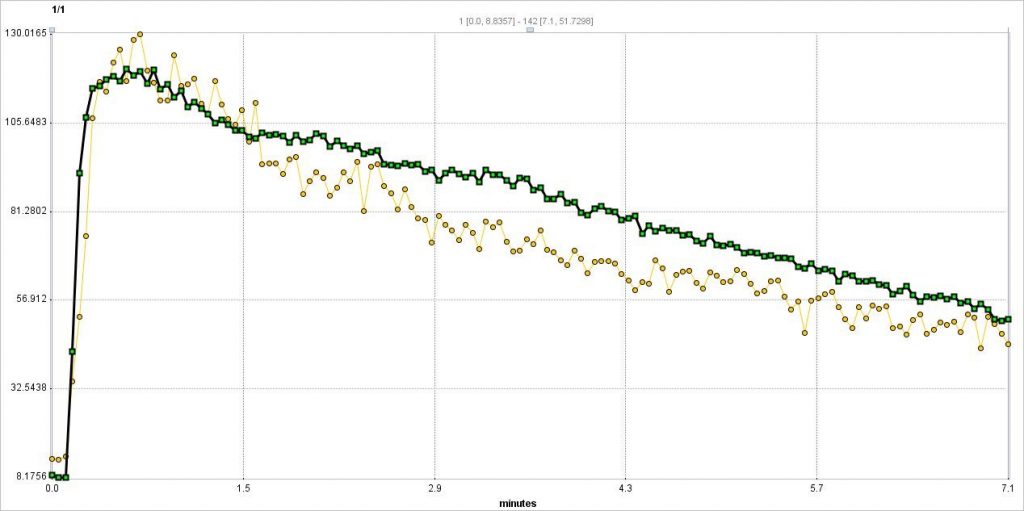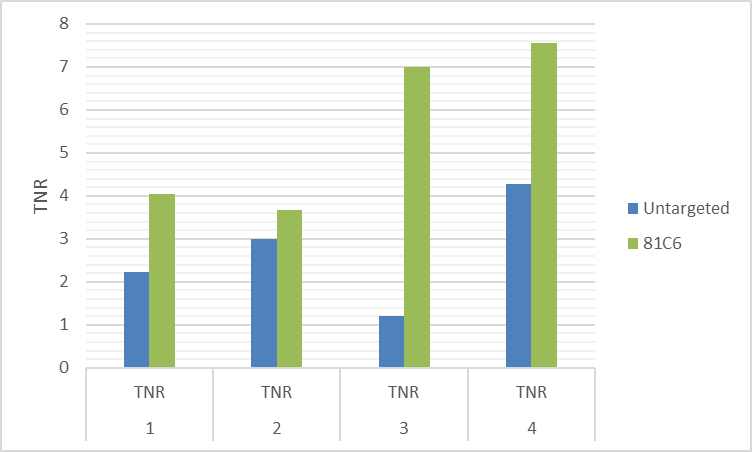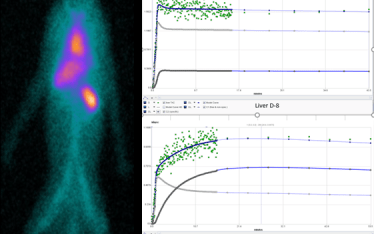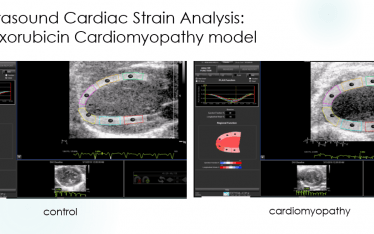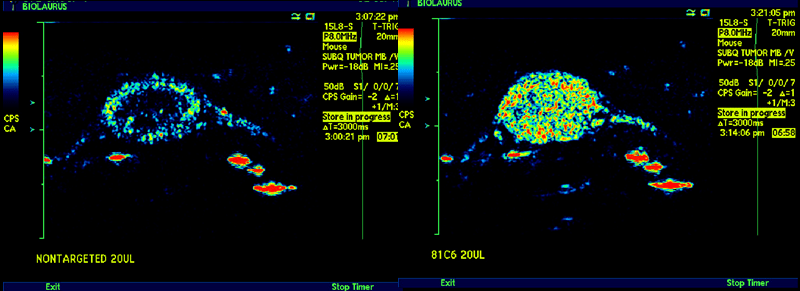
This article is part two in a two-part series. Go here to read part one.
Microbubble Tumor Screening Part 2: Novel Targeting of Extracellular Matrix of Tumor Xenografts by Monoclonal Antibody – Microbubbles
We have previously shown results demonstrating that targeted microbubbles introduced into the circulation of tumor bearing mice can be detected as localizing in the tumor. Here we focus on the targeting of the tumor extracellular matrix protein tenascin. Previously, various labs have targeted endothelial markers such as VEGFR, ICAM, and the integrin αvβ3. It has been presumed that tumor targets not on endothelial cells would not be accessible to microbubbles. Our study demonstrates that this assumption does not hold at least in the case of tenascin. We reasoned that since tumors with very active angiogenesis have fenestrated or discontinuous vascular endothelium (our intravital studies and published results (Bourdon ref)) tumor matrix and cell surface targets would be exposed to circulating microbubbles. To test this concept nude mice bearing human renal carcinoma 786-0 tumor xenografts received untargeted and 81C6-microbubbles and the localization of each compared within the tumor xenograft and adjacent normal tissue. Results demonstrate that tenascin targeted microbubbles specifically localize at high levels in 786-0 tumor xenografts.
Tumor cells were implanted subcutaneously and allowed to grow to a volume of 200-400 cmm. Prior to microbubble injection and ultrasound examination mice were anesthetized with isoflurane/air and maintained anesthetized during all imaging procedures. Mice are positioned on their side and ultrasound gel applied to the tumor surface. An articulated arm holds the ultrasound transducer in place with typically a 2-3 mm offset. Siemens Sequoia ultrasound with 12-17 MHz transducer was used to acquire ultrasound video clips.
Images are acquired with a 2-3 second frame rate in the following sequence; 1. B mode 1-2 frames (anatomic reference, 2. Contrast mode 1-2 frames pre microbubble injection, 3. Time zero injection of microbubbles (10-30 ul volume) and start of contrast image acquisition for 7 minutes, 4. Microbubble burst from transducer to eliminate all microbubbles in the tumor and adjacent normal tissue. Once the microbubbles are burst the sequence can be repeated with the next microbubble. The recommended sequence is to start with untargeted microbubbles followed by targeted microbubbles sequentially.
The microbubble echo intensity time activity curve (TAC) are shown below (Fig. 1,2) for a representative 786-0 tumor bearing mouse sequentially dosed with untargeted and targeted microbubbles. Representative B mode and Contrast mode images are shown for untargeted and VEGFR microbubbles at t=0 and t=7 minutes. In order to compare treatments in a tumor and as treatment groups we have calculated the ratio of tumor activity/ccm to adjacent normal tissue activity/ccm, the TNR, for each treatment 7 minutes following injection of microbubbles, data shown for n=4 mice (Fig.3).
In 3 of the 4 mice the untargeted TNR is greater than 1 indicating a higher background or retention of microbubbles in the tumor vasculature compared to surrounding normal tissue. To normalize for this observation the TNR of the treatment group was compared to the TNR of untargeted microbubbles (TTuR) (Fig.4).
The specificity of the tenascin targeted microbubbles was demonstrated by the inhibition of microbubble tumor binding by pretreatment with unlabeled anti-tenascin monoclonal antibody. Two mice were sequentially imaged with untargeted and 81C6 anti tenascin microbubbles. Mice then received 130 ug 81C6 in normal saline and ten minutes later 81C6 microbubbles were injected. The percent inhibition calculated from the TNR at 7 minutes post injection was 36% and 96% for each tumor xenograft.
This article is part two in a two-part series. Go here to read part one.
